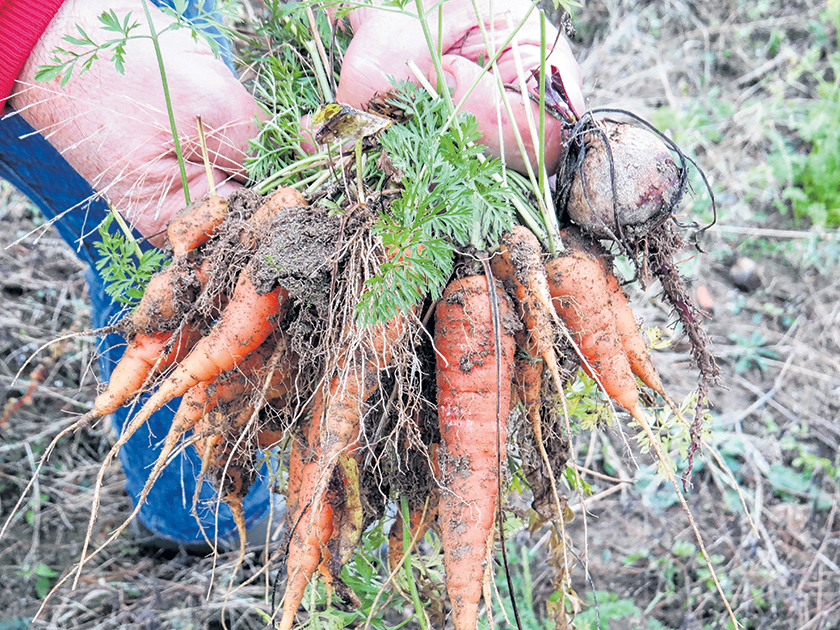By Diane Poulin
If you’re lucky enough to have a backyard garden, you know the joy of growing, eating and sharing fresh-picked vegetables and fruits.
You might also know that how well a garden is prepared for winter can affect the amount of time and labor it needs in the spring, and can impact the growth quality of crops.
Here are a few tips I find helpful for getting your garden ready for the cold season and primed for success in the spring.
- Mark rows of asparagus, rhubarb, ostrich ferns (fiddleheads), strawberries, blueberries and other perennials with tall stakes to avoid mistakenly digging them up in the spring.
- Pull up tomato, squash, pea and bean plants along with their stakes, and remove all weeds and debris. Gently till the soil to expose any insects that plan to overwinter and reduce pest troubles in the spring.
- After the soil is exposed, it’s beneficial to mix in a layer of compost, leaves and/or manure, along with lime, if needed.
- Prepare new garden beds for spring by adding six cups of a complete fertilizer containing approximately 5 percent nitrogen to every 100 square feet of planting area.
WHAT ABOUT HERBS?
- Hardy perennial herbs like sage, thyme and chives will go dormant in the fall, then revive in the spring without special pre-winter treatment.
- Some herbs, like chives, can be potted and brought indoors to grow in a sunny, cool spot throughout the winter.
TENDING TO BERRIES
- Summer-bearing raspberries can be pruned, while fall-bearing raspberries can be mowed to the ground after they have borne fruit. New canes will come up in the spring.
- Fall is a good time to plant blackberries. Mound up the soil around the canes to prevent hard frosts from heaving them out of the ground.
- Strawberry rows can be covered with six inches of clean straw that is free of weed seeds before the first snowfall.
FLOWERS AND SHRUBS
- Give perennial flowers and flowering shrubs a good watering in the fall to prime them for growth when warm weather returns.
- Once the ground has frozen hard, cut perennials back to three inches and mulch them with a thick layer of leaves or straw.
- If you plan to put in a new flower bed next spring, cover that area now with mulch or heavy plastic to discourage emergent growth when the ground warms up in the spring.
- Plant spring bulbs like crocus, hyacinth, tulips, daffodils and spring starflower. When selecting bulbs, make sure they are hardy and disease free. Bulbs should be planted in well-drained soil with a temperature below 60 degrees.
At Summit Natural Gas of Maine, we’re excited about preserving the environment growing Maine’s economy by building a stronger community.
We invite you to visit the Viles Arboretum in Augusta to learn more about the community garden, farmer’s market and dogsledding events this winter. To learn more, visit vilesarboretum.org.
Sources: Almanac.com and the University of Maine Cooperative Extension.
Send questions/comments to the editors.





Success. Please wait for the page to reload. If the page does not reload within 5 seconds, please refresh the page.
Enter your email and password to access comments.
Hi, to comment on stories you must . This profile is in addition to your subscription and website login.
Already have a commenting profile? .
Invalid username/password.
Please check your email to confirm and complete your registration.
Only subscribers are eligible to post comments. Please subscribe or login first for digital access. Here’s why.
Use the form below to reset your password. When you've submitted your account email, we will send an email with a reset code.